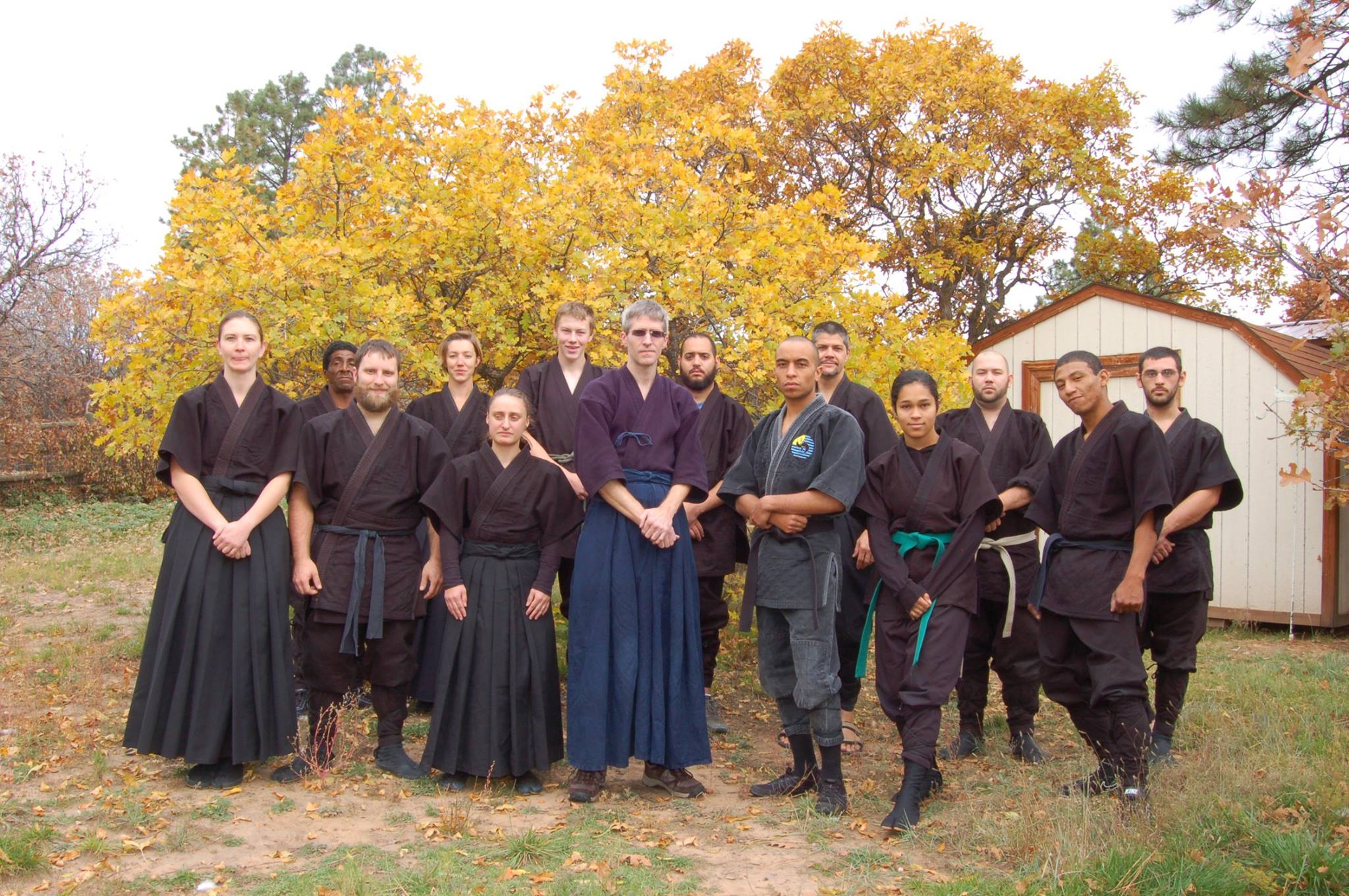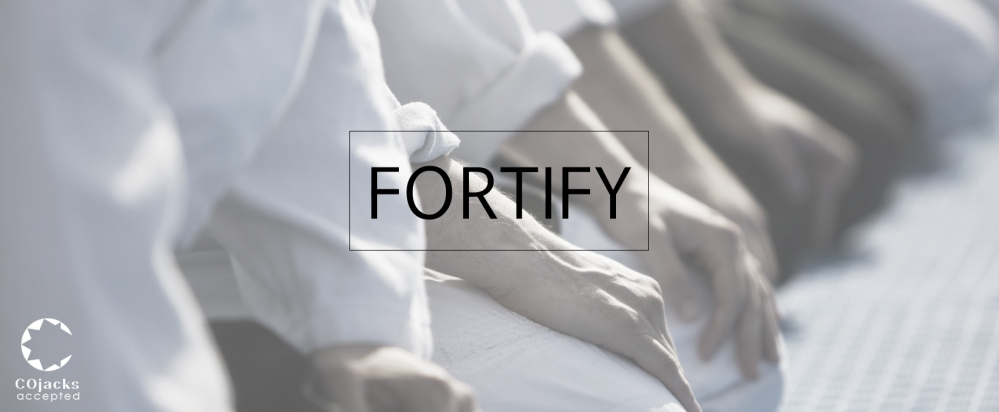Leaders of the Kurai Kotori Ryu embrace several perspectives which are defining components of the ryu. One such perspective is that testing is less than ideal for our school. The leaders of the Kurai Kotori Ryu become intimately acquainted with their students. At the point when testing is offered it is not as a test, but as an initiation, a ritual wherein the leader passes on a bit of their burden to the devotee.

I feel that my trial began well before the challenge was given to enter the mat. I cannot know if there was a distinct beginning point of my initiation. In fact, I did not even know that I would be initiated as a second dan while in Durango. As someone who has recently volunteered for the challenge of leading a small contingent of the ryu my elders are not unconcerned with my capacity to fight, but have more cause to press me on matters related to my intentions for teaching, developing, and leading those who are to follow my instruction. Can I solve problems related to the development of student’s skills, and the minimizing of their weaknesses? Can I succinctly communicate who we are and what we do to outsiders in a way which serves the ryu? Can I hold a school together with all of the challenges faced by classical martial arts schools in a contemporary world which shuns so much of what we are?
On the mat I felt an immediate recognition of Taisho Haganeryu’s chosen approach to the fight. He entered fully into the spirit of earth, and offered no route to bait him into an extension. To stand in this position, as the student challenged to face the teacher in combat while the teacher shows no interest in fighting is as much a spiritual challenge as a combative puzzle. Those who have been in this position understand something of the fate of Arjuna on the field of battle when he looked out and saw no enemies in the opposing army.
In the Kurai Kotori Ryu we have a body of theory known as genkotsu. It is the study of what happens to the body when struck, twisted, pressed, cut, and so forth. It is the layer of interpretation that drops down over the eyes in a fight which tells you to strike at the stomach to get the hip throw, and to strike at the head to get the reap. In this match it was a given that Hagane’s response-less earth position was a limited time offer, and that I would have to make some decisions about what was most valuable to accomplish with the time I had there. I could soften up the thighs some, try to reduce his speed. But to move the needle on the fight I’d have to direct some meaningful strikes to the body and head. My torso strikes felt about as effective as thumping a tree. I applied an entering tactic to gain an upper gate attack. The entrance was solid, but didn’t cause any real change in Hagane’s posture or awareness, and as I reared up for the head strike through the inside gate I just had a vision of the arm bar I’d have snatched out of the air – were the roles reversed, and thought I heard Jubal Early saying, “This is not your moment.” Following this I made a better entrance to the outside gate, landing a solid hit to the jaw.

At about that time Haganeryu started striking back, which was when I noticed how winded I had gotten while Hagane was merely at rest. I can’t honestly say what I was doing with my breathing at the very beginning of the fight. Just on the basis of training I would have to guess that my breathing wasn’t terrible, but must have been fairly stagnant. I was actively breathing for recovery, defending and countering entrances, and generally working to stay in the fight when we wound up in a tight grapple. In the beginning we were on our feet and I managed to get a solid sprawl with head control, but there aren’t many things to do from there without venturing a little loss of control. So, down I went.
A little later (seconds, I’m sure) I was in one of those positions where – if it were a competitive fight – Hagane would have been applying enough pressure to my arm to just barely not quite break it, but to ensure a speedy submission. In context, there is more of an emphasis on respect for and awareness of the position, so my arm was being held firmly and very locked, but unthreateningly. I tapped. I was given a moment to breath, and was instructed to choose a weapon.
I chose the sword, against Haganeryu’s staff. In truth, this is the fight which – not only that evening, but in recent memory – I am least proud of. I believe that I performed passably on a tactical level, and that my targeting and form were alright. Strategically, though, I blundered the whole fight. I made entrances that would have been good feints, and feints that were entirely ineffectual. Hagane and I later discussed the match, and without turning this into an essay on irimi against an opponent with greater range, let it merely be noted that the more one’s training includes sparring of substantial consequence – with challengers of greater and lesser skill – the better off one is when it comes to that critical moment.
Following this I faced Yamatatsu with knives (bokken). I had already developed a great respect for the competence of Yamatatsu, having seen him perform in a variety of settings over that previous few days. A knife fight is probably the martial arts equivalent of blackjack. It’s more incremental than a sword fight, and more episodically decisive than a hand to hand match. At any given exchange one or both parties are going to get cut. The contest is in knowing when you’ve got the position to go all in.
What I most appreciate about this match is that it quietly pronounced that no distinction needed to be made between my initiation and Yamatatsu’s. They are the same. Any promotion, initiation, or new student gained is the growth of the ryu. Certainly there is personal significance, but it does not exist in distinction from the whole, but as a part of it.
Following a fairly decisive carotid artery stroke that I pressed on Yamatatsu it seemed unreasonable to continue the match, and it was ended.
Yamatatsu then faced Haganeryu, unarmed. It was made very clear that Yamatatsu is comfortable on the ground. Also, in that match I saw another aspect of the Kurai Kotori Ryu which I see as a great strength of ours. Yamatatsu’s trials are for him to describe, but suffice it to say that what I saw in how he was tested was manifestly different from my own experience. The leaders of the ryu have all been brought up in the art to look for weakness in the heart of the student (as is the ninja way), and to purge it. The challenge given to one student, which pushes them to the end of their perceived capacity into a new understanding of themselves, would be meaningless to another student. This is not always because the later student is just that superior but because we each have widely varied strengths and challenges which form the cyclical balance which is definitive of the Kurai Kotori. The diversity of backgrounds, intellects, stature, etc. within the Kurai Kotori Ryu is greater than that of any other school – and likely of most other schools combined. This is because ninjutsu attracts the outliers of society, who come to our halls with heavy burdens of personal baggage, injuries, and mental barriers. The pedagogy of the Kurai Kotori Ryu is a crucible from which the slag is expelled. – from the willing.
The final match was the one which serves to illustrate the foundation of all martial arts. The initiate is told to retrieve their sword. The instructor retrieves their own. Slowly, the two approach the invisible boundary of iwase (the single pace separation). In this place they stand for a time, a space of time that no two people present would guess to have lasted the same duration. The initiate moves. The instructor moves. And in that moment the initiate finds a shaft of white oak positioned firmly at his brow, his own sword having not reached any place of potency. They separate, bow, and return to the circle.
I see this as the definitive difference between the martial arts and schools of self-defense, or even athletic combat. In the case of the self-defense world, the student seeks to gain an upper hand over their mortality. The self-defense enthusiast maintains a vision of survival at all costs. Our gladiators (boxing, MMA, football) serve as celebrations of vitality, youth, and endurance. The martial artist is does not hope or believe they will survive the gauntlet. The desire of the martial artist is to be worthy of the gauntlet, to face the enemy with poise and confidence offering a silver platter laden with the entire wrath of hell. Their training does not rely on their youth, or even their strength. The martial artist trains for warriorship, to rise to the varied challenges presented. To rise to meet any challenge presented does not imply success, survival, or any other externally determined thing. The warrior is prepared within, consequences be damned.
True martial pursuits are defined by their practitioner’s embrace of this fact. It is the fact of death. Death, which may come so suddenly and calmly that it seems – as may be the case – that it was there all along.
Deacon K.E. Rodda
Nin Tashi Kurai Kotori Ryu
